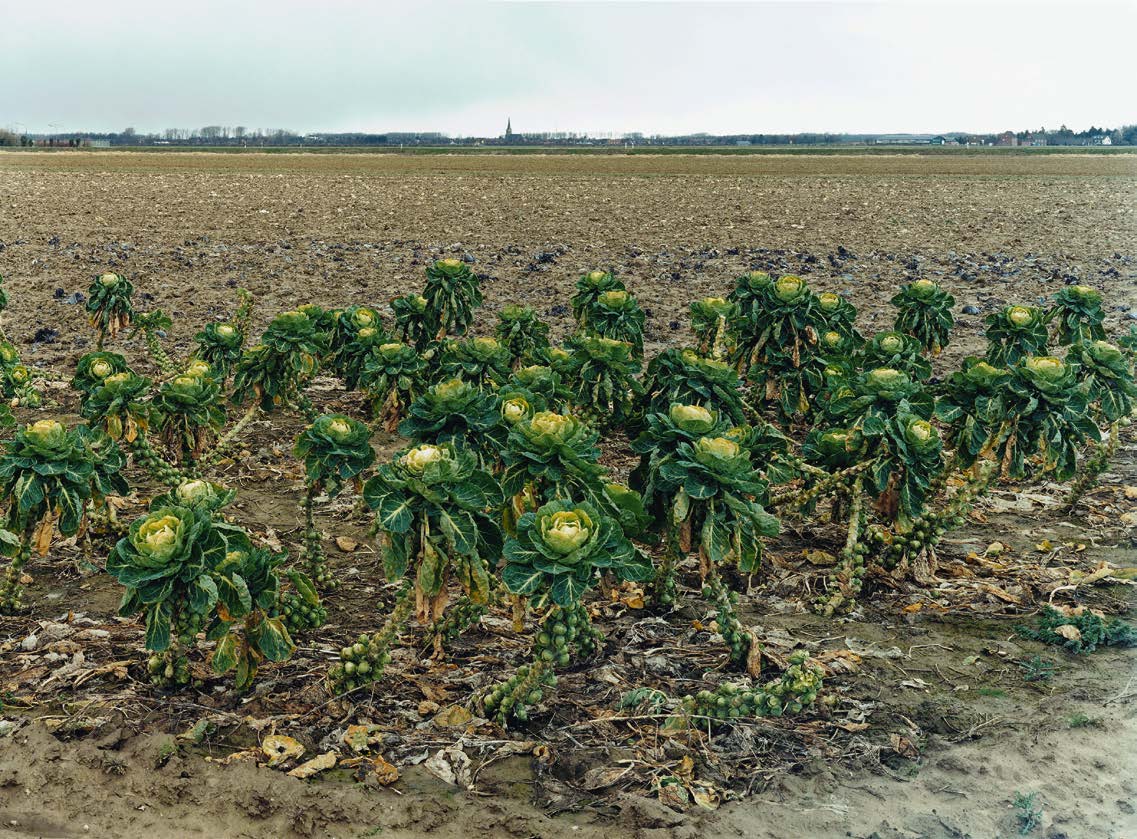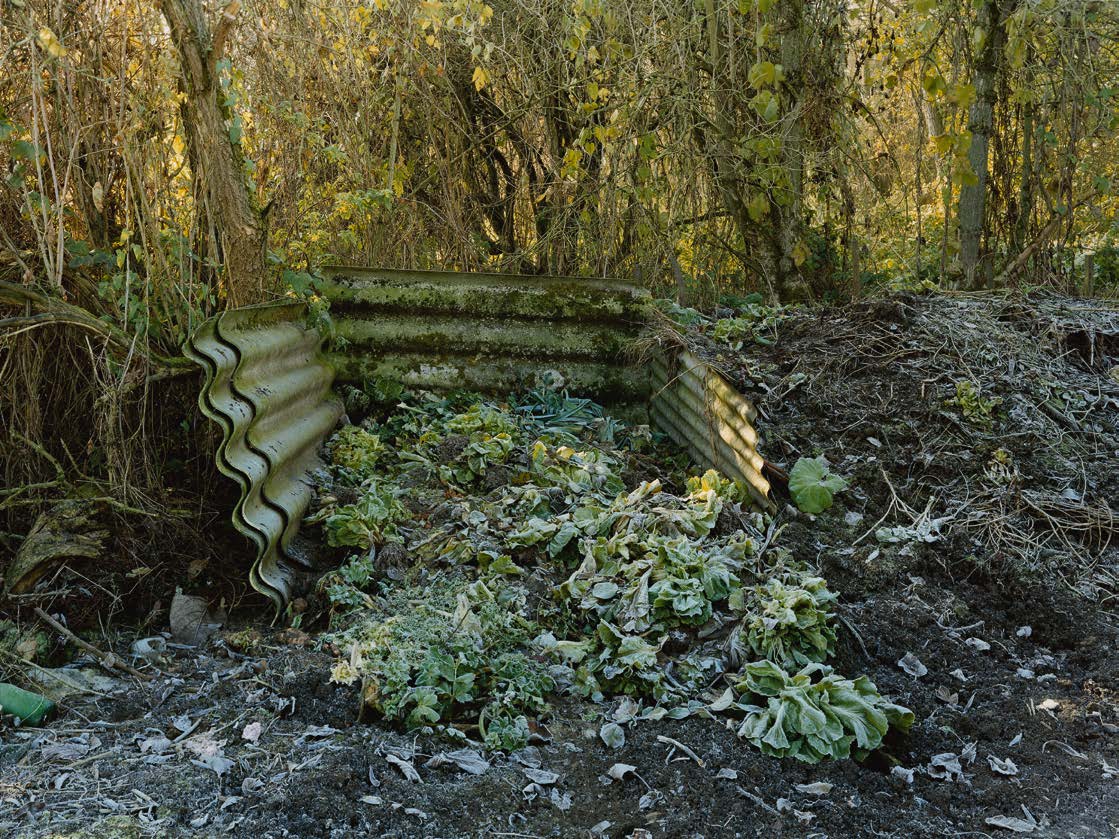Simone Nieweg
Gardens as a Cultural Construct
Simone Nieweg (b. 1962) is a good example of the influence of place, time and even the experience of viewers on their perception of art works. Between 1948 and 1989, Czech photography preferred different approaches than Western Europe, accepting mainly those impulses that were in harmony with “lyric movements” defined as typically Czech by Jaroslav Boček no later than in 1962. In the Czech Republic, the work of Simone Nieweg was first displayed in Distance and Closeness, a group exhibition presenting the Düsseldorf School of Photography at the ÚLUV Gallery in the centre of Prague in the early 1990s. Back then her photos caused even more outrage than the photographs her mentor Bernd Becher made with his wife. Facing mining towers, gasholders, coke oven plants, half-timbered residential buildings and other “anonymous sculptures” from 1830 to 1930, Czech viewers drew on documentary or preservationist approaches, but standing in front of Simone Nieweg’s beds of cauliflower and cabbage, they were utterly helpless and their experience with Czech art photography was rendered useless. Sixteen years later, in 2007, when the same exhibition appeared the House of Art in České Budějovice, the very same artists were considered classics of photography. The works of the Bechers and some of their disciples have been also displayed in Prague and in several large exhibitions, e.g. Of Body and Other Things: German Photography of the 20th Century (Municipal Library in Prague, 2003), solo exhibitions of Bernd and Hilla Bechers (Rudolfinum, 2012), Barbara Probst (Rudolfinum, 2014), and Jörg Sasse (House of Art, České Budějovice, 2015).
The Düsseldorf School of Photography, nowadays firmly established, emerged from the studio of photography at the Academy of Arts in Düsseldorf to teach us to think differently with the help of a camera. Bernd and Hilla Bechers worked systematically to do away with aesthetizing and focusing on light and subjectivity, the very requirements of the Czech photography of the time. Thanks to certain conceptual approaches, their work was often reflected in the context of contemporary art, embodying the dispute of two worlds: the world of art photography and the world of contemporary art. The multilayered value of the Bechers’ photographs is evident in the merging of contemporary art discourse with the autonomous tradition of photography. With the Bechers, just as with Blossfeld’s natural studies, we witness careful research into the strange ancient laws of economics, finding basic functional approaches across regions and decades fuelled by the industrial revolution. Following in the footsteps of the German tradition from the 1920s and 1930s, they photographed industrial sites, doing it with great objectivity and precision. Their thorough search for a technique, which would make it possible to transfer the laws of functionality and economy that shaped their objects into flat, two-dimensional images, later arranged in typological series, was interesting for conceptual artists. But their precise use of photographic technique should earn them praise from photographers, and their interest in the annihilated world of hard labour, which to a large extent moved from Europe to Asia, should be popular with the public who does not care about petty squabbles in the art world.
While teaching at the Düsseldorf Academy, Bernd Becher (1931–2007) founded the studio of photography (of which he was the head in 1976–1996) and let his students create post-conceptual series, often reflecting architecture and urban space. They learnt to notice not just the exceptional, but most of all the common, the everyday things that surround us more than anything else, and, as such, have the biggest impact on our taste, giving evidence of our own lives. But the students did not develop typological series close to the heart of their teacher, focusing rather on technique, technical processes, style forming of the annulled individual idiosyncrasy and objectivist approach. Thanks to these characteristics, the “Düsseldorf School of Photography”, a term used for the work of Becher Studio graduates, became a great market brand. The Becher Studio was attended by a number of now-famous photographers, including Andreas Gursky, Thomas Struth, Thomas Ruff, Axel Hütte, Candida Höfer, Simone Nieweg, Jörg Sasse, and Petr Wunderlich.
While the majority of the Czech audience might still see these photographs as a titillating combination of provocation and boredom, an informed viewer sees them for what they are: the classic works of New
Topographics. Thirty years later, the aesthetics of banality has been repeated many times over and quite thoroughly explored even in our country — by the duo Lukáš Jasanský and Martin Polák, some members of the group Pondělí, Michal Kalhous and many other photographers from a younger generation.
The authors labelled the “Düsseldorf School” photographers typically find a very small patch of the world that they systematically, almost obstinately examine with a camera for years on end, trying hard to convince the people around them of the seriousness and far-reaching consequences of their work. The very same approach is offered by Simone Nieweg, whether she photographs gardens, edges of fields, or forest, capturing strategies of cultivation perfected over centuries and landscapes formed by these structures. Her books Landscapes and Gardens (2003) and Nature Man-Made (2012) published by Schirmer/Mosel in Munich give an account of her continuous examination and of changes in her approach to these issues. She religiously sticks to her chosen technique, which she keeps developing: from growing vegetables in suburban gardens to edges of fields, field tracks and borderlines of fields and forests, observing how this hobby forms a distinctive urban space dotted with strange sculptures. Apart from plants, she focuses on simple garden houses, temporary shelters for people and gardening tools, and various improvisations and imitations able to fence off plots, to demarcate garden beds or compost heaps, to support the plants, or to make all kinds of little traps and scarers. Looking at these photos, we cannot help consider a particular context that the author could not have imagined: many of us still remember gardening in the normalisation1 era, those weekly escapes from public life to the privacy of cottages and small garden patches. Now, gardening is again gaining popularity, both in the suburbs and in the form of urban gardening in gaps between houses or on roofs. But let us not forget that Simone Nieweg has been photographing “her” gardens since the mid-1980s.
She herself specifies that when she was taking the photographs of gardens, her aim was to capture a world that seemed destined for extinction in the highly industrialised environment in which she lived. Additionally, in the atmosphere following the Chernobyl disaster, she wanted to portray this world as objectively and accurately as possible.
Her photographs do not fall into strictly composed series; they are rather presented as individual images with their own specifically coloured horticultural products, morning frost and soft light. It is what makes her work different from the accurate, cold and intellectual work of her better known peers from the Academy. But the enthusiasm and distance she adopts to explore this small patch of the world and archetypes of the organisation, production and space management of horticulture provide a firm bond with the Düsseldorf brand.
#28 cultura / natura
Archive
- #45 hypertension
- #44 empathy
- #43 collecting
- #42 food
- #41 postdigital photography
- #40 earthlings
- #39 delight, pain
- #38 death, when you think about it
- #37 uneven ground
- #36 new utopias
- #35 living with humans
- #34 archaeology of euphoria
- #33 investigation
- #32 Non-work
- #31 Body
- #30 Eye In The Sky
- #29 Contemplation
- #28 Cultura / Natura
- #27 Cars
- #26 Documentary Strategies
- #25 Popular Music
- #24 Seeing Is Believing
- #23 Artificial Worlds
- #22 Image and Text
- #21 On Photography
- #20 Public Art
- #19 Film
- #18 80'
- #17 Amateur Photography
- #16 Photography and Painting
- #15 Prague
- #14 Commerce
- #13 Family
- #12 Reconstruction
- #11 Performance
- #10 Eroticon
- #9 Architecture
- #8 Landscape
- #7 New Staged Photography
- #6 The Recycle Image
- #5 Borders Of Documentary
- #4 Intimacy
- #3 Transforming Of Symbol
- #2 Collective Authorship
- #1 Face








